

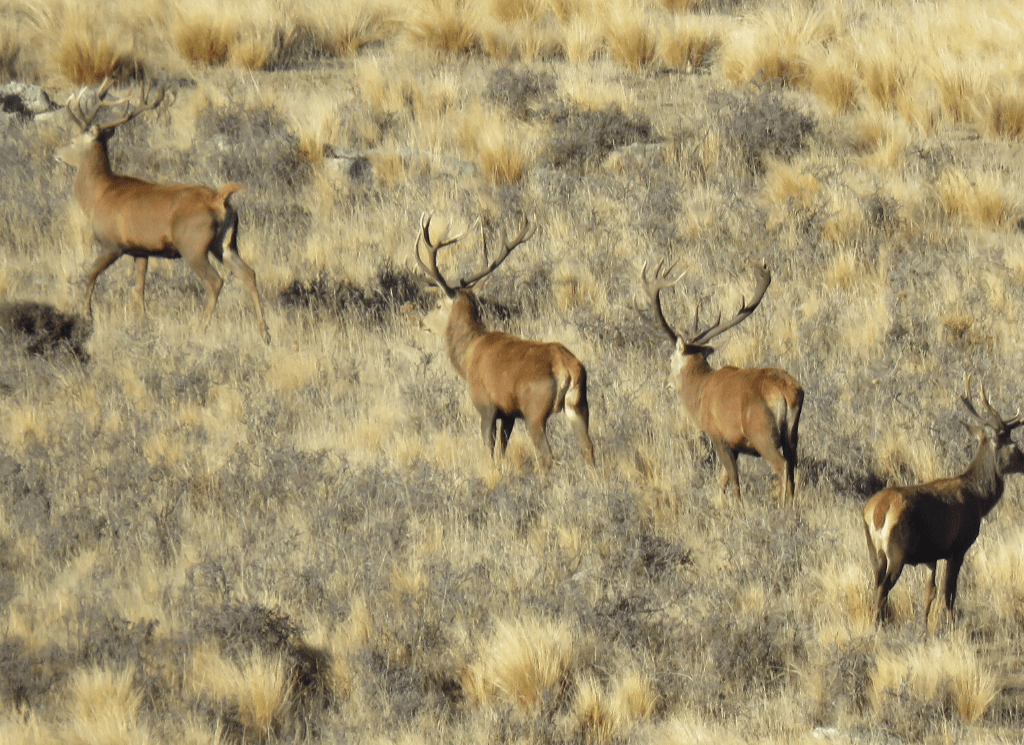
Hunting Experiences
13 July 2020
In New Zealand, ‘mob’ is a common term used to describe a large group of big game animals. The word is universally applied by Kiwi hunters to any sizeable group of deer (regardless of species), and also tahr, chamois, wild pigs, and wild goats. Historically in this country, the biggest mobs were concentrations of red deer, fallow, sika, tahr, pigs, and goats.
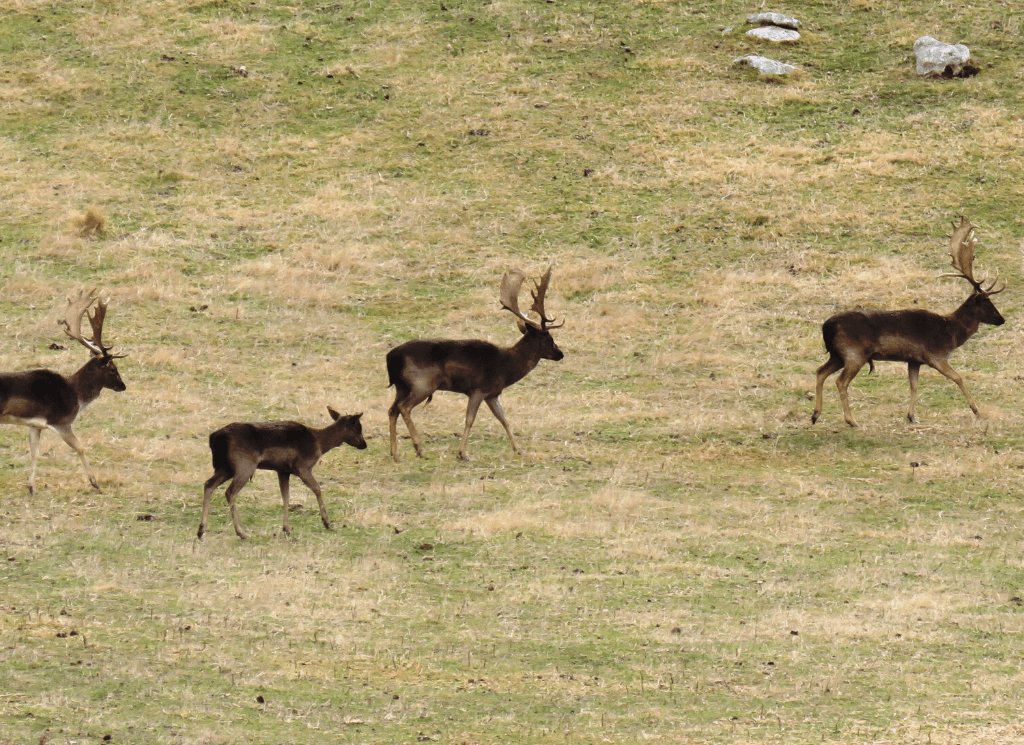 The days of plague proportion mobs are long gone, but good-sized mobs are still seen on the hill, particularly at certain times of the year. A good example is red deer. Rut mobs can be big but post-rut in the winter months of June to August, the hinds and yearlings can group up into really impressive-sized congregations and move and feed as one. It’s a hard time to hunt them for venison, as, in open country, there are many eyes on watch, they select good lookout spots for bedding, and when spooked the whole mob vacates the area leaving no member of the mob behind.
The days of plague proportion mobs are long gone, but good-sized mobs are still seen on the hill, particularly at certain times of the year. A good example is red deer. Rut mobs can be big but post-rut in the winter months of June to August, the hinds and yearlings can group up into really impressive-sized congregations and move and feed as one. It’s a hard time to hunt them for venison, as, in open country, there are many eyes on watch, they select good lookout spots for bedding, and when spooked the whole mob vacates the area leaving no member of the mob behind.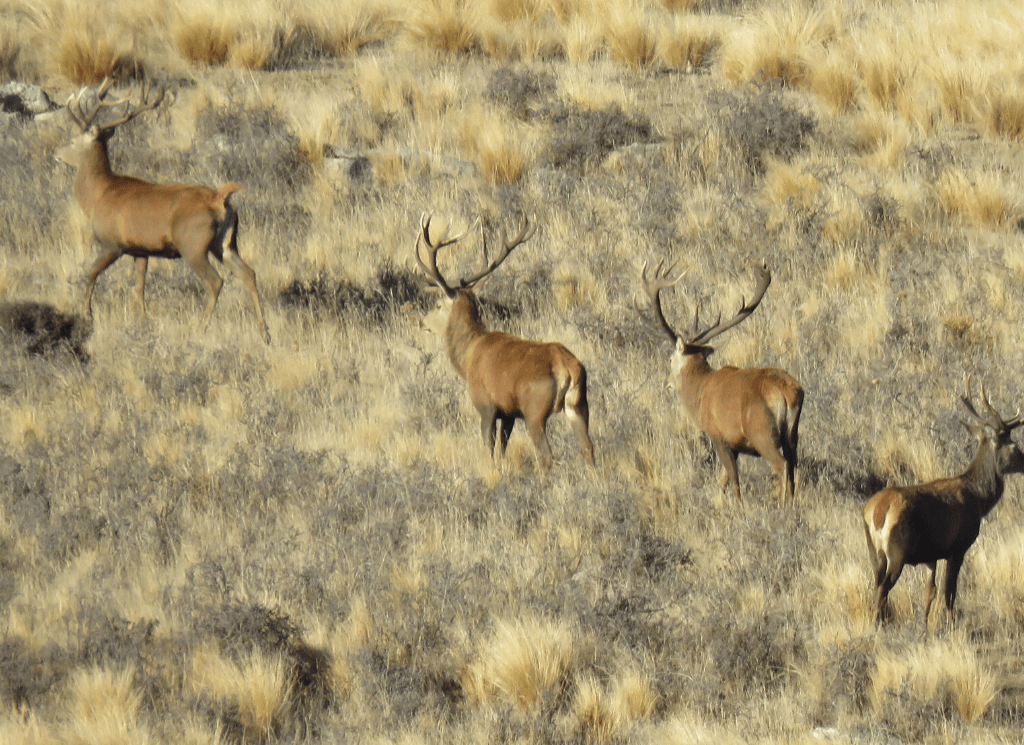 Red deer stags also mob up together over winter, and in open country can be found at high altitude on warm ridges free of snow. The mob can contain a range of ages. When mobbed-up, a lot of hunting country can appear empty of game, until you find where the bachelor mob is hanging out.
Red deer stags also mob up together over winter, and in open country can be found at high altitude on warm ridges free of snow. The mob can contain a range of ages. When mobbed-up, a lot of hunting country can appear empty of game, until you find where the bachelor mob is hanging out.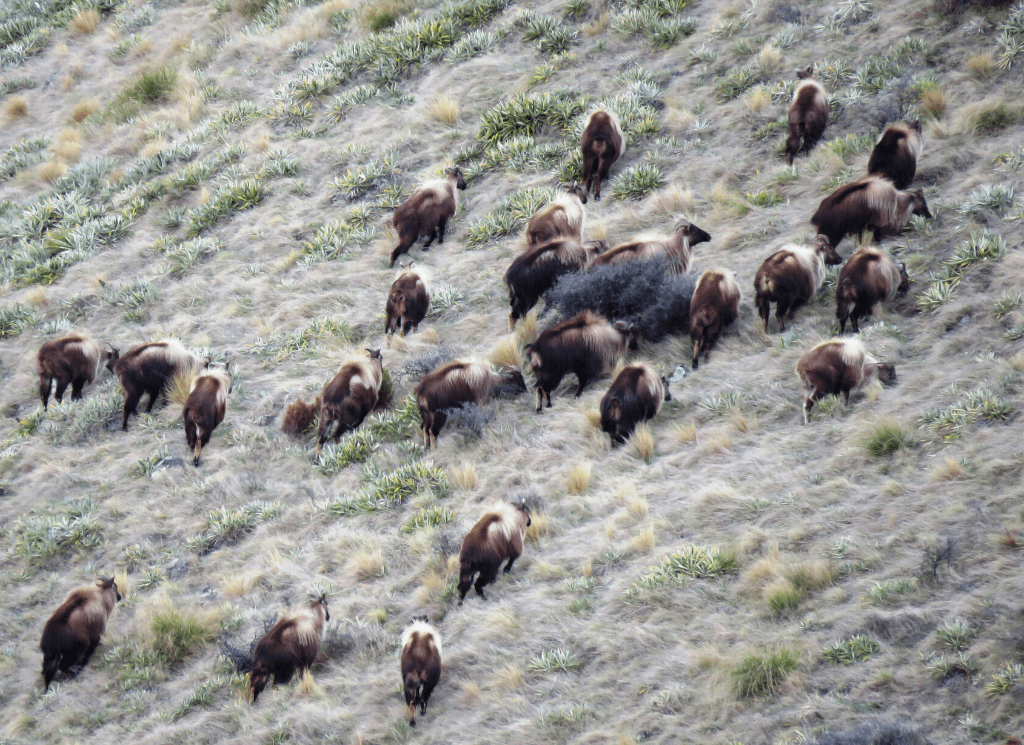 Tahr (like wild goats) is a particularly gregarious mob animal. The nannies and young live together all year. They’re joined by the bulls in winter for the rut. In late winter the bulls leave to form age-group male mobs of their own. The sight of a 30-plus mob of mature bull tahr feeding together on low country in October is a great sight.
Tahr (like wild goats) is a particularly gregarious mob animal. The nannies and young live together all year. They’re joined by the bulls in winter for the rut. In late winter the bulls leave to form age-group male mobs of their own. The sight of a 30-plus mob of mature bull tahr feeding together on low country in October is a great sight.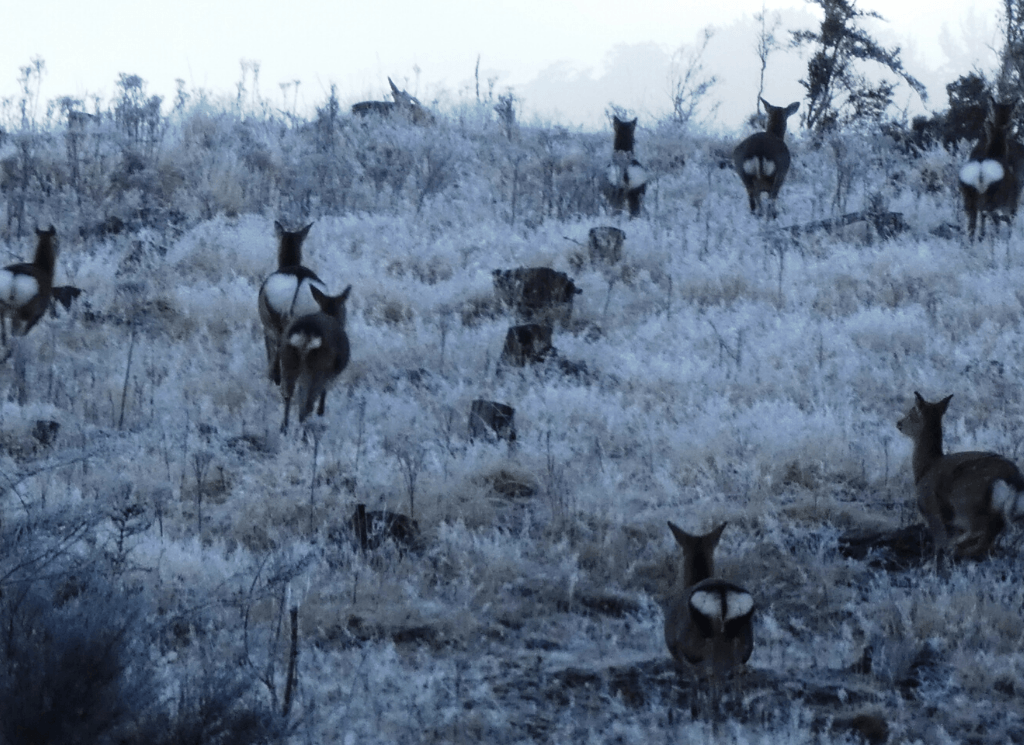 Outside of the rut, large mobs of sika become most obvious during winter when free-range animals concentrate on the farmland fringes in search of food. They feed during the night, and, when disturbed the following dawn, flee back to the bush sanctuary. Wild fallow deer are another species that can appear on farmland in large mobs when winter arrives.
Outside of the rut, large mobs of sika become most obvious during winter when free-range animals concentrate on the farmland fringes in search of food. They feed during the night, and, when disturbed the following dawn, flee back to the bush sanctuary. Wild fallow deer are another species that can appear on farmland in large mobs when winter arrives. 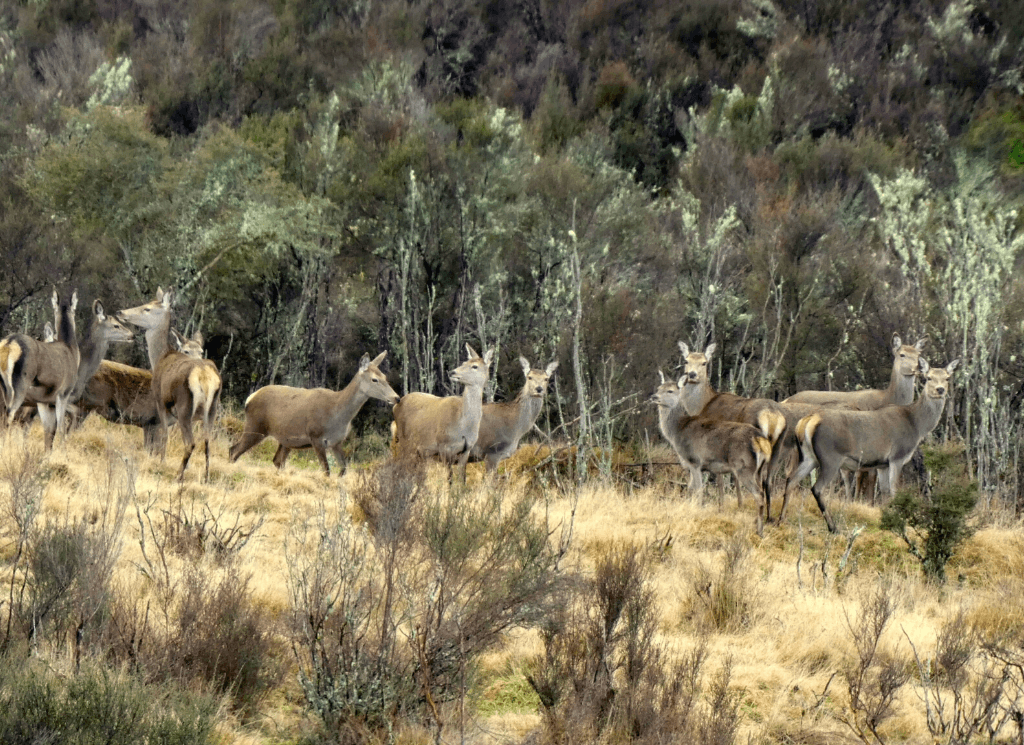 After the rut, the does stay on the home range, but hungry bucks form mobs that go in search of food often on neighboring properties. That meal may be a turnip crop grown for cattle, and often trophy bucks are shot as crop raiders, much to the despair of the trophy hunting guide. Outfitters who want trophy bucks to stay at home during winter now plant winter feed just for their free-range herd.
After the rut, the does stay on the home range, but hungry bucks form mobs that go in search of food often on neighboring properties. That meal may be a turnip crop grown for cattle, and often trophy bucks are shot as crop raiders, much to the despair of the trophy hunting guide. Outfitters who want trophy bucks to stay at home during winter now plant winter feed just for their free-range herd.
Want to ask a question about Poronui, personalise your vacation with bespoke itinerary options or find out about available dates?
Simply fill in your name and contact email address with a short message and we will get back to you.